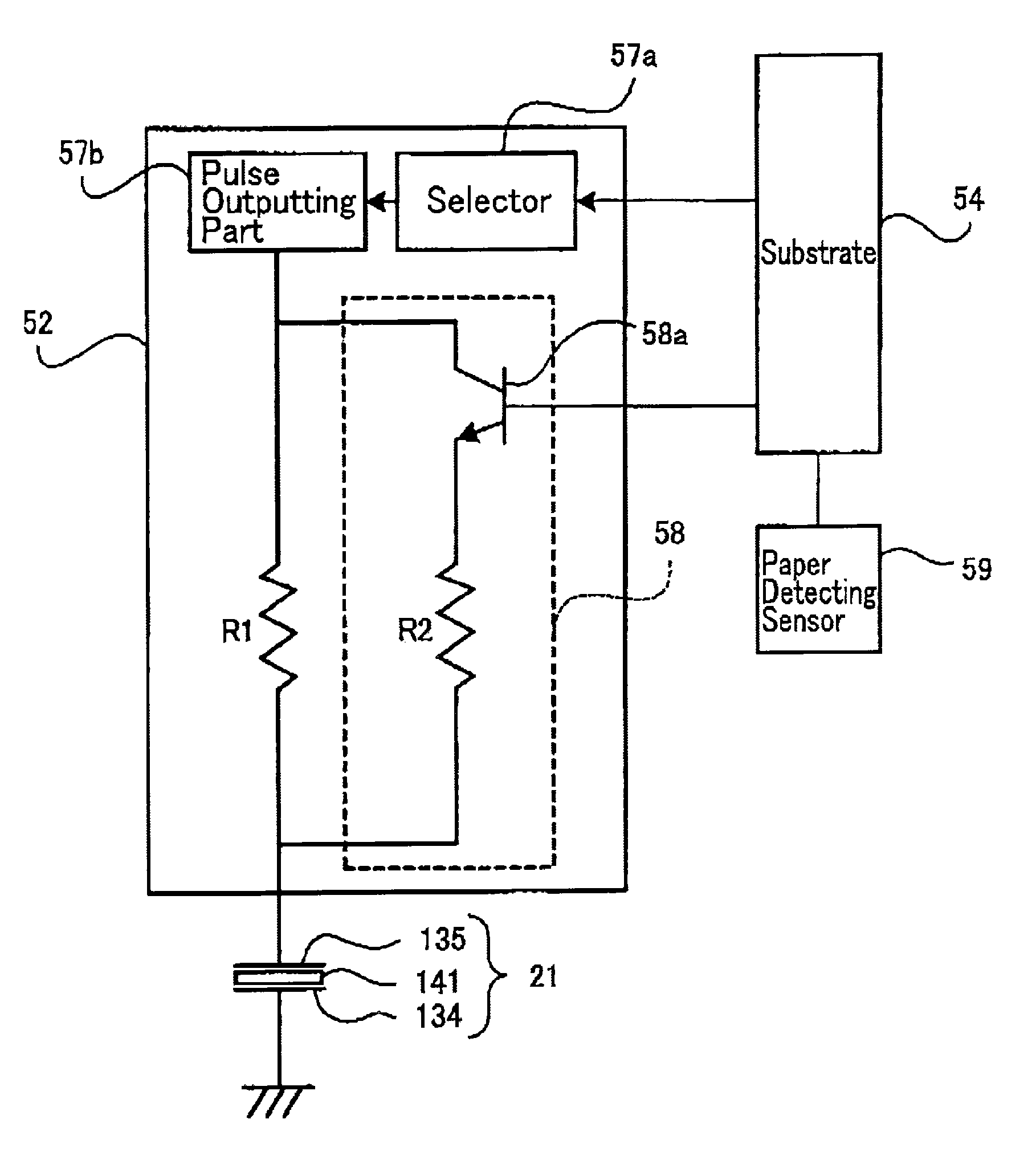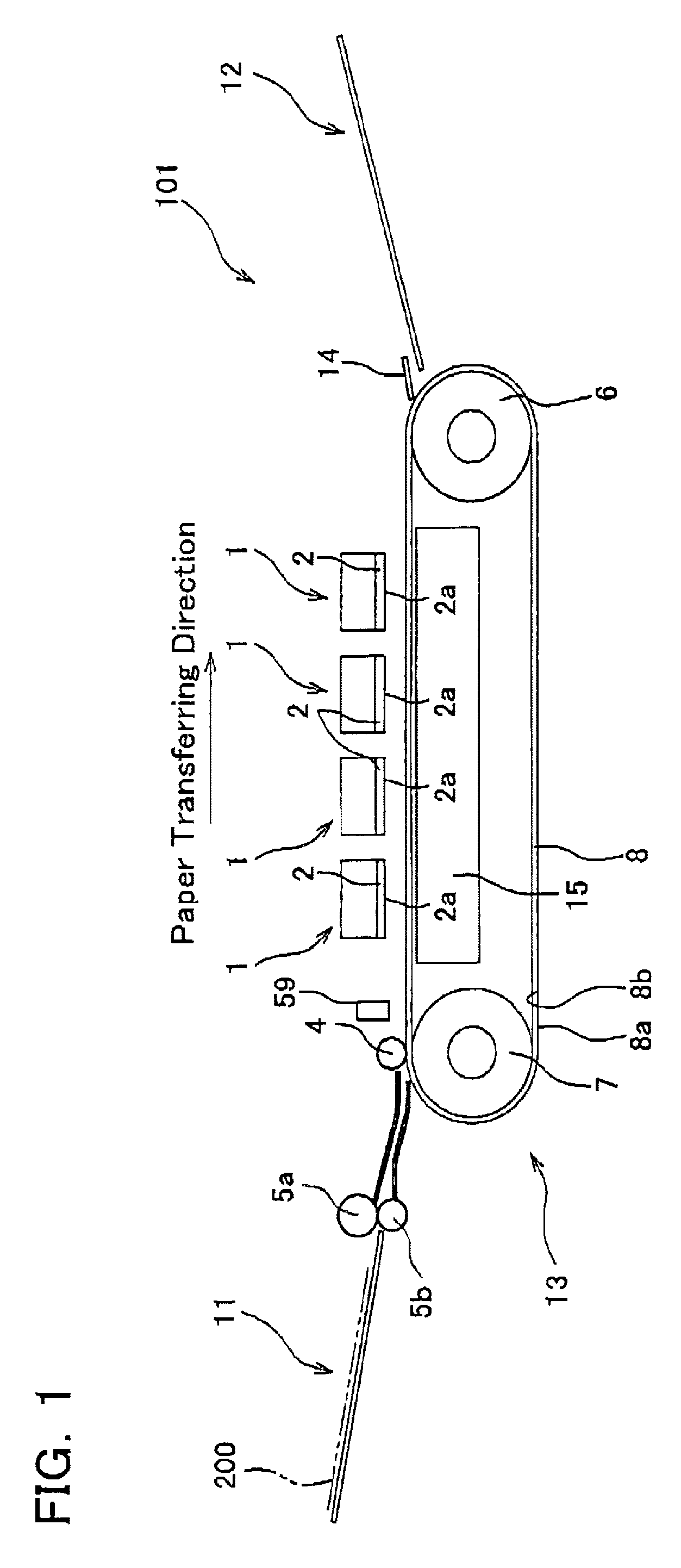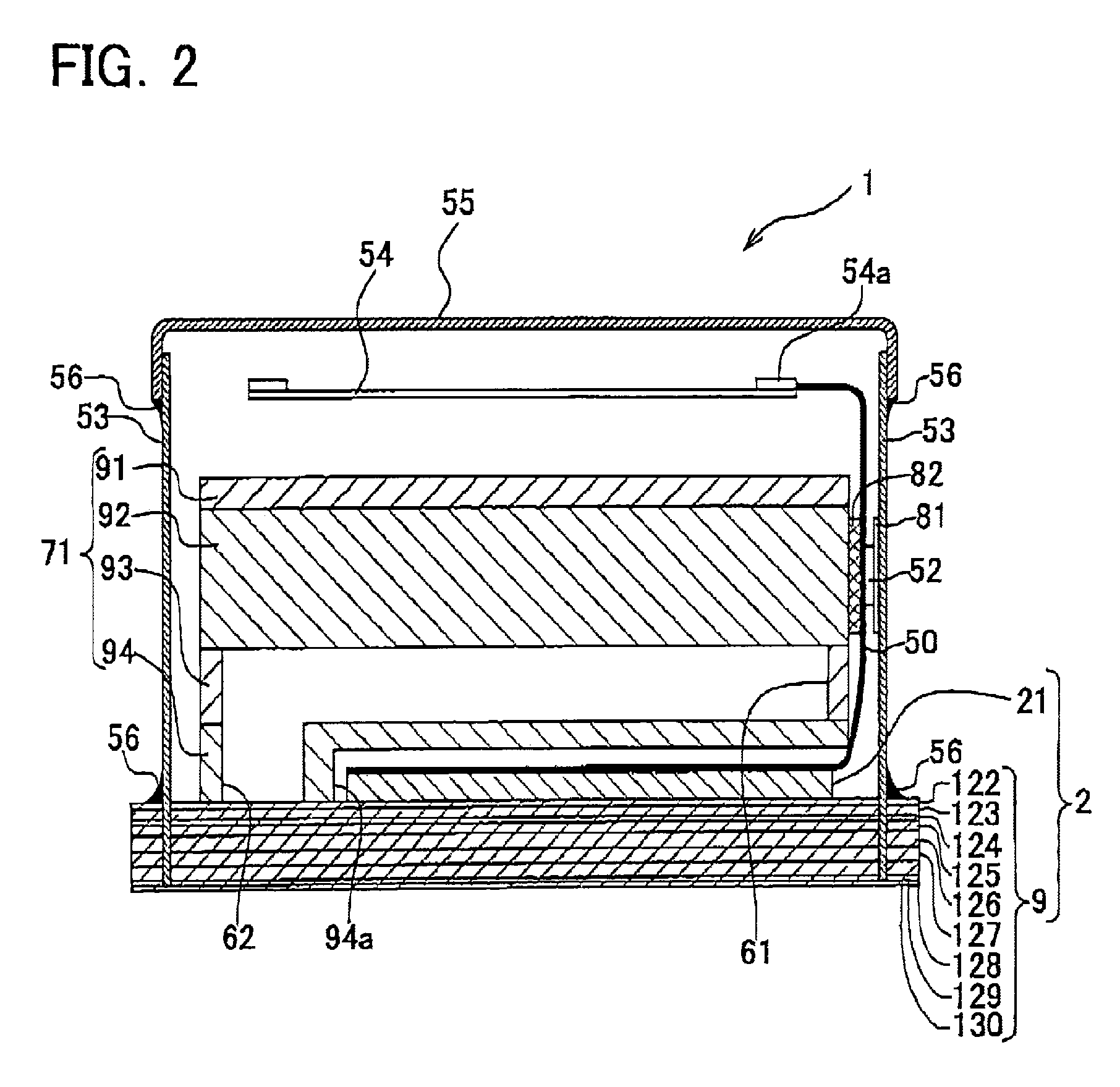Ink jet printer applying different voltage pulses in actuator
a technology of actuators and voltage pulses, which is applied in the direction of printing, inking apparatus, other printing apparatus, etc., can solve the problems of ink droplets not being stably discharged from the nozzle, ink consumption, etc., to prevent the viscosity of ink from increasing, avoiding ink consumption, and preventing the effect of ink viscosity
- Summary
- Abstract
- Description
- Claims
- Application Information
AI Technical Summary
Benefits of technology
Problems solved by technology
Method used
Image
Examples
Embodiment Construction
[0022]A suitable embodiment of the present invention will be described below with reference to the figures. FIG. 1 shows an outline side view of the entire configuration of an ink jet printer 101 (hereafter referred to as printer 101). As shown in FIG. 1, the printer 101 is a color ink jet printer that has four ink jet heads 1. In this printer 101, a paper feeding part 11 is on the left, and a paper discharge part 12 is on the right.
[0023]A paper transferring path for transferring paper (a print medium) 200 from the paper feeding part 11 toward the paper discharge part 12 is formed within the printer 101. A pair of transfer rollers 5a and 5b is disposed at a downstream side, in the direction of paper transferring of the paper feeding part 11. The pair of transfer rollers 5a and 5b transfers the paper 200 from the paper feeding part 11 toward the right. A belt transferring mechanism (paper transferring mechanism) 13 is disposed in a central portion of the paper transferring path. The...
PUM
 Login to View More
Login to View More Abstract
Description
Claims
Application Information
 Login to View More
Login to View More - R&D
- Intellectual Property
- Life Sciences
- Materials
- Tech Scout
- Unparalleled Data Quality
- Higher Quality Content
- 60% Fewer Hallucinations
Browse by: Latest US Patents, China's latest patents, Technical Efficacy Thesaurus, Application Domain, Technology Topic, Popular Technical Reports.
© 2025 PatSnap. All rights reserved.Legal|Privacy policy|Modern Slavery Act Transparency Statement|Sitemap|About US| Contact US: help@patsnap.com



